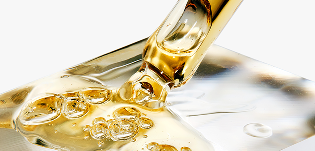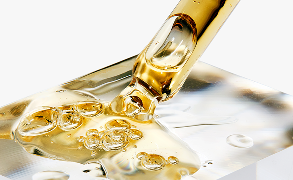Back to Basics: What are Retinoids
![]()

What Exactly are Retinoids?

Retinoids are an all encompassing term for the molecules that make up the vitamin A family commonly used in skincare. They are among the most extensively researched ingredients due to their wide-ranging benefits which include targeting uneven texture and being considered the gold standard for combating signs of aging.
While retinol is the most well-known retinoid in skincare, there are several types of retinoids such as retinal, retinyl esters (including retinyl palmitate, retinyl acetate, and retinyl propionate), Granactive RetinoidTM (hydroxypinacolone retinoate) - all of these are the branches that make up the vitamin A family tree.
The Science Behind Retinoids

Our skin has its own renewal process that is responsible for exfoliating the skin and maintaining its smoothness and radiance. This is a process commonly referred to as skin cell turnover. As we grow older, the skin's natural renewal process begins to slow down. Retinoids help to maintain this renewal process which is how it's able to improve skin texture and even the appearance of skin tone. It also helps to visibly improve aging skin. The change in the rate of skin cell turnover when you introduce a retinoid into your routine is also what can contribute to the dryness and irritation you can experience.
Additionally, changes to the skin’s natural collagen and elastin content can lead to fine lines and wrinkles, as well as loss of elasticity and firmness. Retinoids target the appearance of the signs of aging caused by this loss of structural proteins.
One of the key differences between all those Retinoids we mentioned earlier, is the amount of steps it takes to convert them into the bioactive form. Retinoids must undergo conversion in order for them to deliver their skin benefits. Retinol for example, is first converted to retinal before then transforming into the bioactive form. Granactive Retinoid™, on the other hand, is formulated for direct use by the skin and doesn't require conversion to become active. The closer a molecule is to the bioactive form of vitamin A, the more efficiently it's delivered, ensuring more effective results - but the more likely it is to be irritating to the skin if you haven’t used Retinoids before.
When Should You Incorporate Retinoids?
The rate at which the aging process affects your skin can differ based on your genetics and environmental factors, including UV exposure, pollution levels, and lifestyle choices.. Consider beginning a retinoid regimen when you want to address signs of aging, as well as texture and uneven skin tone.
Some common aging indicators to watch for include the emergence of fine lines around the eyes and forehead, a decrease in firmness, and an overall dullness or lackluster appearance to the skin.
Retinoids & Pregnancy
When it comes to retinoids and pregnancy or breastfeeding, please consult with your doctor about skincare you may wish to use.

Incorporating Retinoids: A Step-by-Step Guide

For new users, we recommend choosing a lower percentage and gradually increasing your skin’s tolerance over time. Start with our Retinol 0.2% in Squalane - a well-studied, familiar technology or with a next-generation retinoid available in two textures - Granactive Retinoid 2% Emulsion or Granactive Retinoid 2% in Squalane. You may start by using the product at night, and ensuring you apply SPF in the mornings to help protect against damaging UV exposure.
Retinoid Beginners
For those new to retinoids, we recommend to start with a lower percentage. This way you can gradually build up your skin's tolerance over time. The Ordinary offers a couple of suitable options:
- Retinol 0.2% in Squalane: This option provides the well-studied retinol in a simple oil format.
- Granactive Retinoid 2% Emulsion: This is a next-generation retinoid available in an emulsion texture.
Begin by using the product gradually in the evening and remember to apply SPF in the mornings to protect your skin from harmful UV exposure.
Intermediate Retinoid Users
If you’ve used Retinoids before or once you feel your skin has adapted, you can consider moving to a higher strength formula such as our Retinol 0.5% in Squalane, Retinol 1% in Squalane, or Granactive Retinoid 5% in Squalane.
Advanced Retinoid Users
For advanced users, you may be excited to know that we’ll soon be adding a new Retinoid to our portfolio: Retinal 0.2% Emulsion. This serum is designed to provide efficient delivery of the bioactive form of the Vitamin A molecule that offers enhanced skin benefits, with only one conversion step required.
Remember, it's crucial to choose the retinoid that matches your experience level and gradually increase the strength as your skin becomes more accustomed to it. Always use SPF during the day to protect your skin when using retinoids.
So now you know, retinoids, which belong to the vitamin A family, are effective in addressing skin texture, tone, and signs of aging like wrinkles and fine lines. When incorporating retinoids into your skincare routine, it's recommended to take a personalized approach. Start with lower percentages and less frequent use, gradually increasing both as your skin becomes more accustomed to the product over time. This gradual adjustment helps maximize the benefits while minimizing the potential for irritation. If you’re interested in starting your retinoid journey, you can explore our Retinoid portfolio.


 Claim Your 10% Off
Claim Your 10% Off
